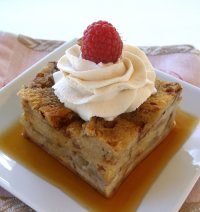 Caramelization is a chemical change that makes naturally occurring sugars in fruit, when gently sautéed in butter, turn brown and quite flavorful. Fruit can also be further caramelized under a broiler. When sugar is heated to a sufficiently high temperature (320 degrees F +), it decomposes or “caramelizes.” The melted substance is known as caramel. Its color changes first to yellow, then to brown, and it develops a distinctive and appealing flavor and aroma. One of the important products of sugar caramelization is an aromatic chemical, diacetyl, that provides a pronounced buttery aroma of cultured butter.
Caramelization is a chemical change that makes naturally occurring sugars in fruit, when gently sautéed in butter, turn brown and quite flavorful. Fruit can also be further caramelized under a broiler. When sugar is heated to a sufficiently high temperature (320 degrees F +), it decomposes or “caramelizes.” The melted substance is known as caramel. Its color changes first to yellow, then to brown, and it develops a distinctive and appealing flavor and aroma. One of the important products of sugar caramelization is an aromatic chemical, diacetyl, that provides a pronounced buttery aroma of cultured butter.
Pears, apples, bananas, peaches, mangoes, and almost all types of fruit can be caramelized. The fruit gets fairly soft during the process, so start with fairly firm fruit to begin with.
SARAH SAYS: When you have small fruit, such as pitted cherries, you can caramelize them whole. For larger fruit, such as apples, pears, or peaches, it's best to cut them into large pieces or thick slices. Dried fruit can be left whole.
This technique is used with the Caramelized Pear French Toast Casserole Recipe Tutorial
KELLY CA SAYS: I have a HUGE Anjou pear tree in my backyard, and the sun-ripened pears were just calling to me.
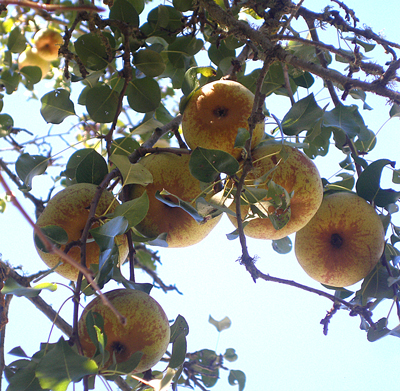
HOW TO TIPS:
1. Peel, core and chop the pears into a large irregular cubes. For more baking help, go to Pears – How to Cube
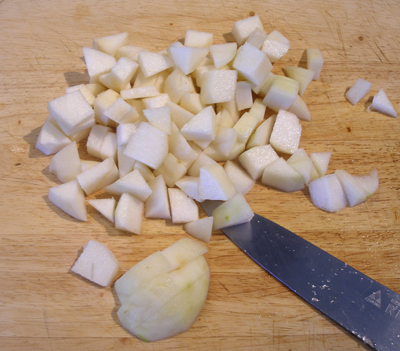
2. Place a large skillet over medium heat and add the butter to the pan.
When the butter has melted, add the pears, then add the brown sugar, cinnamon and salt.
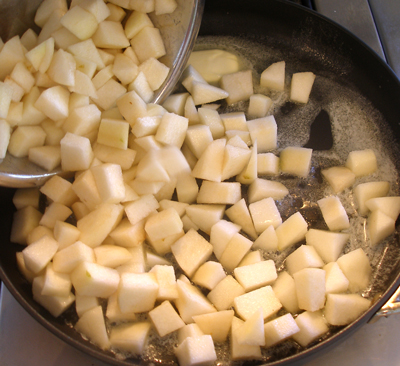
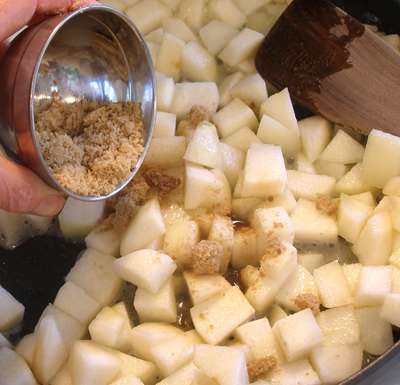
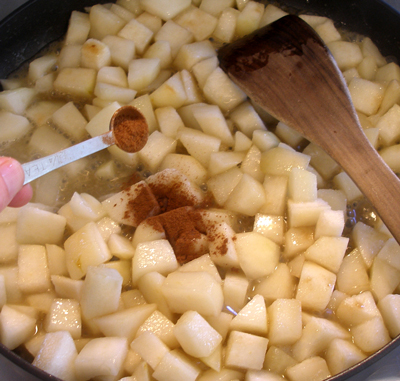

3. Cook the pears, stirring occasionally, until the moisture cooks off and they start to caramelize on the edges. The butter / sugar mixture should also turn a nice brown color.
This will take 8-12 minutes. Do not overcook the pears. You do not want to cook them until they start to fall apart!
SARAH SAYS: You can even add in some lemon juice or vinegar (raspberry, cider, or balsamic) while caramelizing to heighten the flavor of the caramelized fruit. Cook for about 5 minutes, or until the fruit softens slightly. Add a few teaspoons, or to taste, and continue to cook.
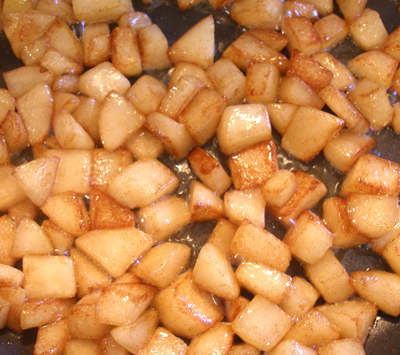
4. Spread the pears out on a rimmed baking sheet to cool.


